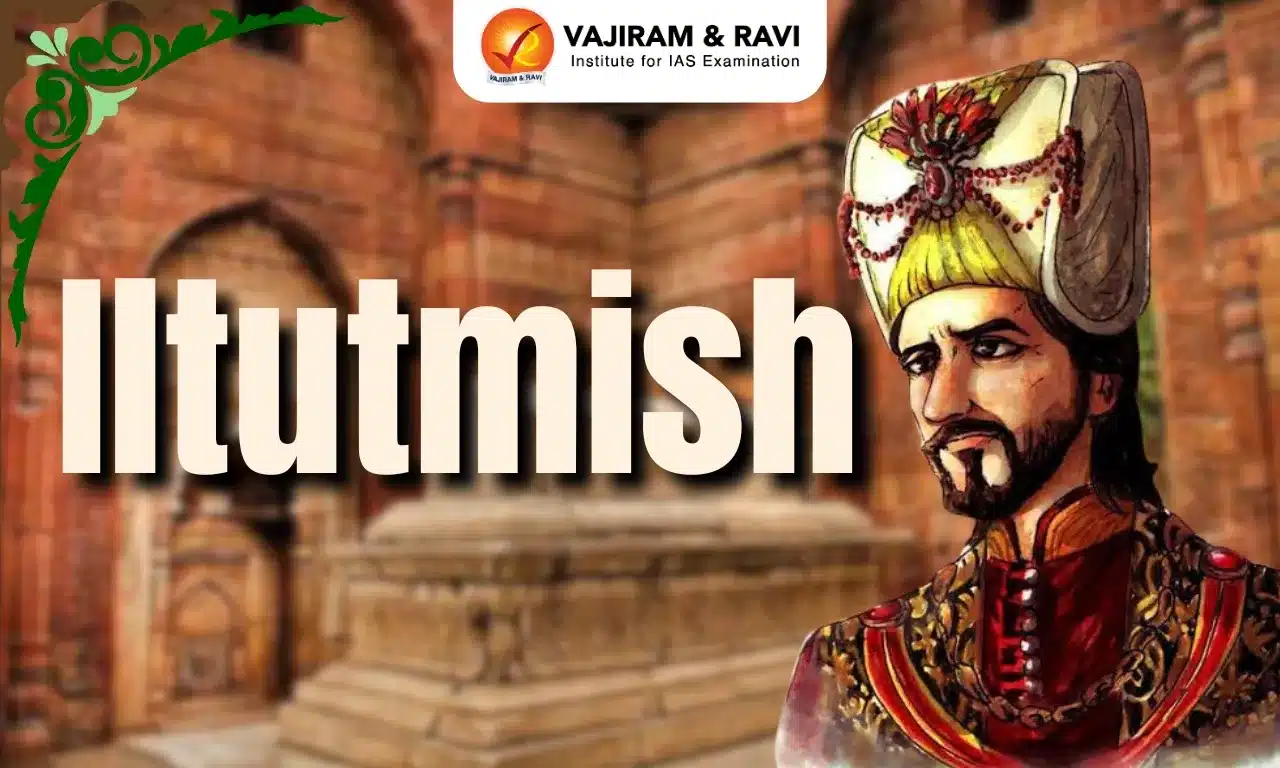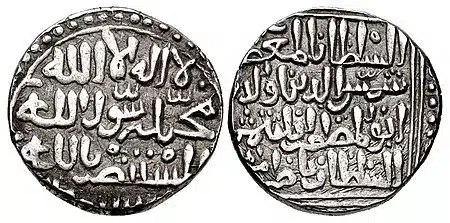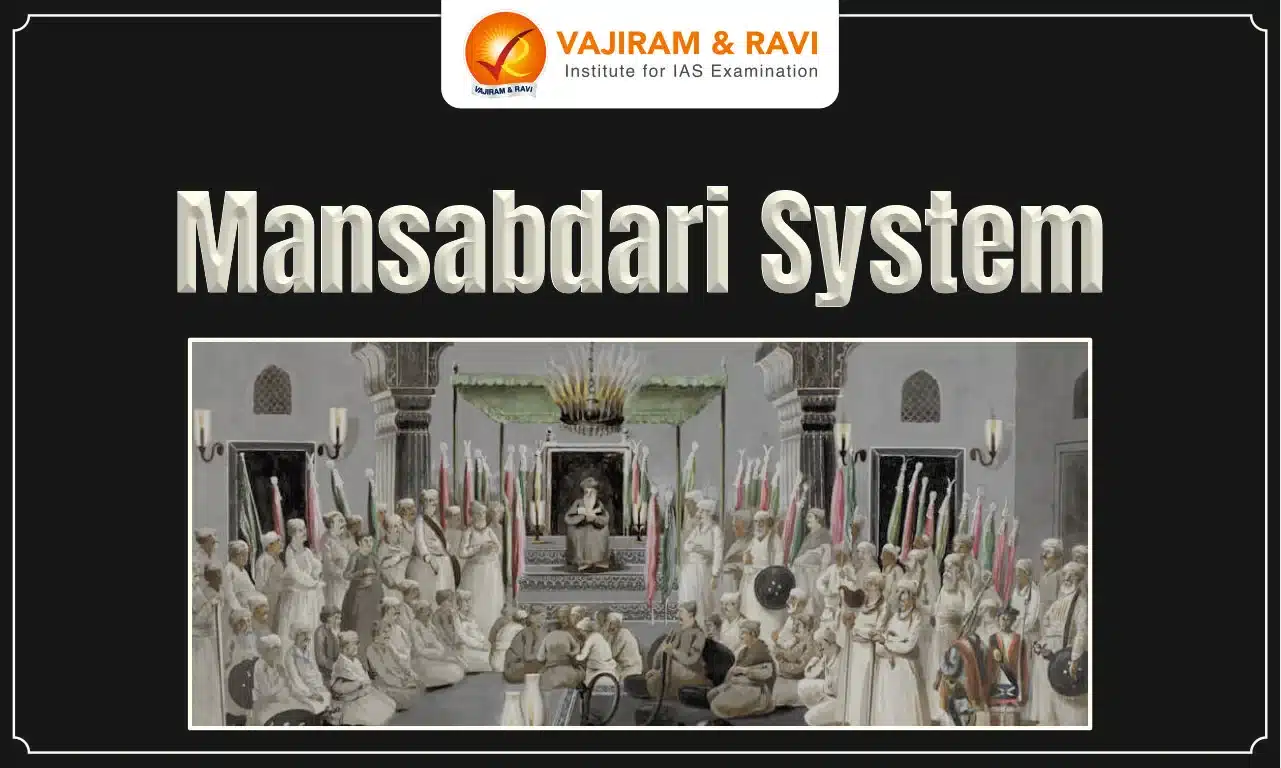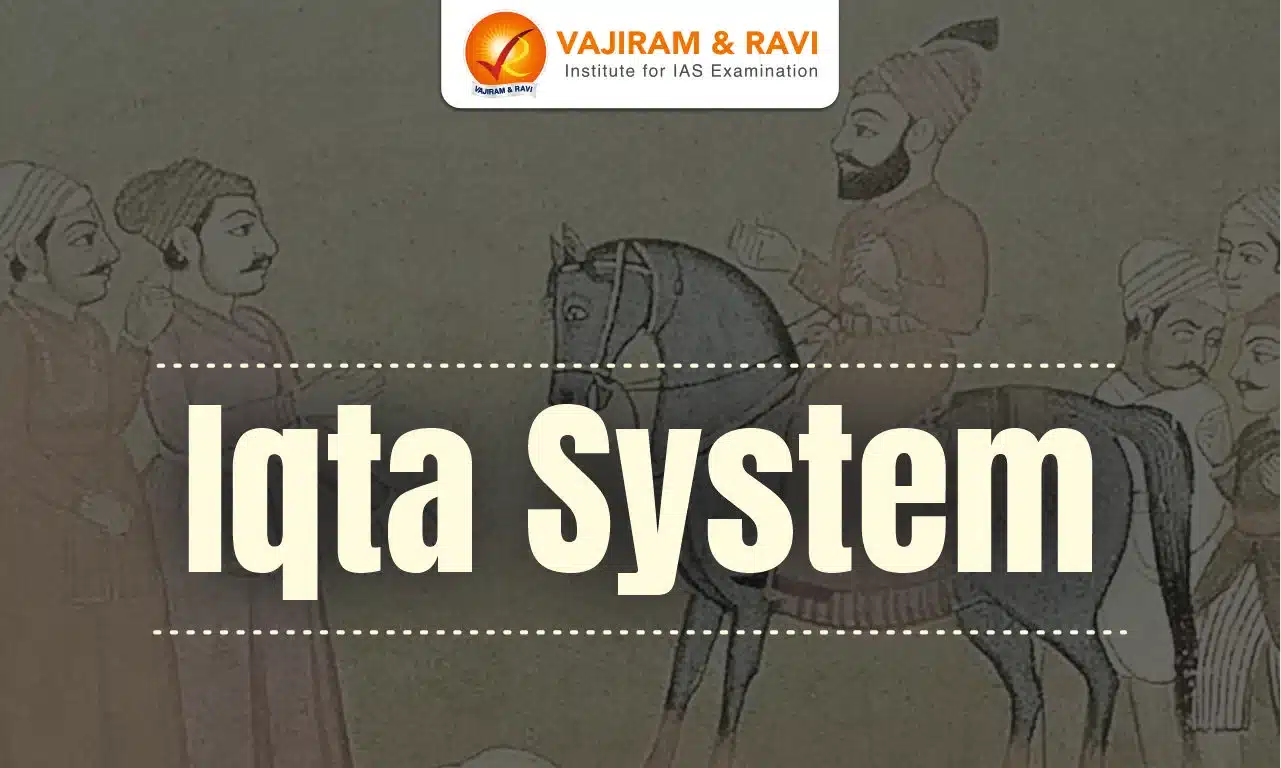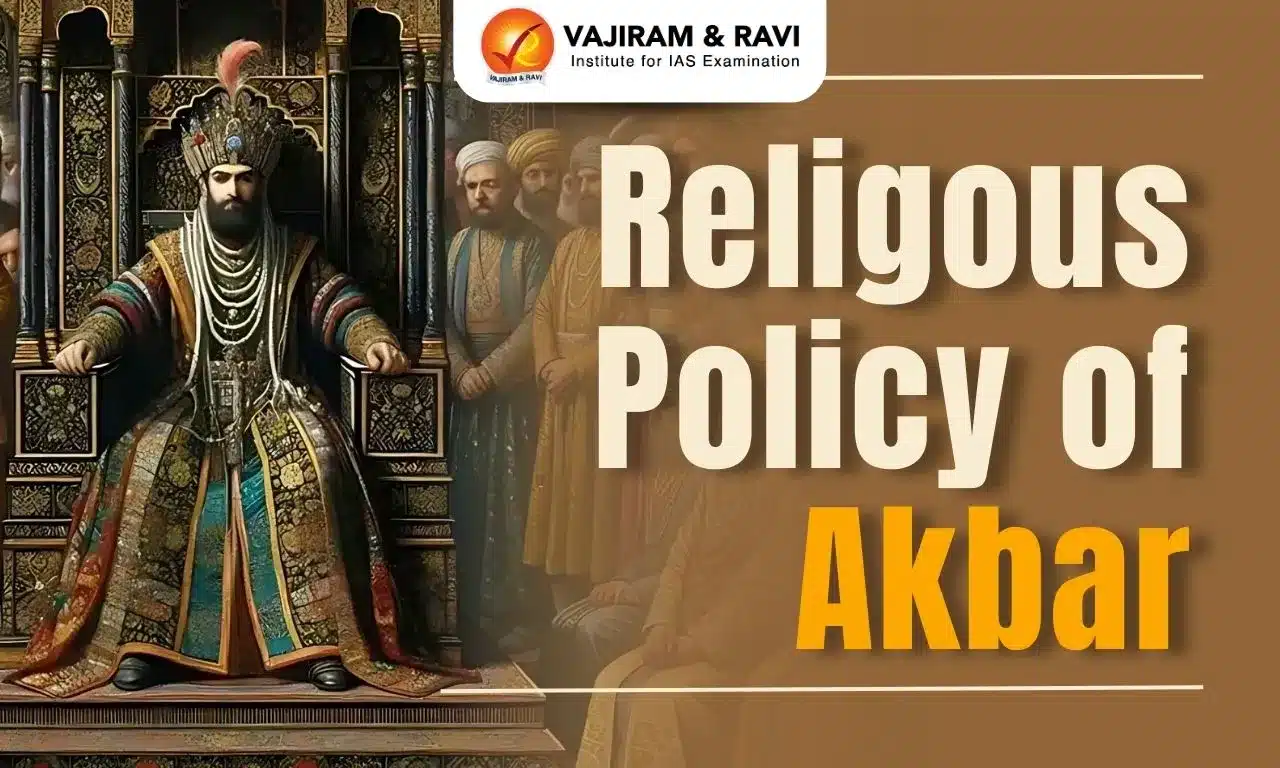Iltutmish, the third Sultan of the Delhi Sultanate, ruled from 1211 to 1236, significantly consolidating its power. Iltutmish was born into the Ilbari tribe of Central Asia and rose from slavery to prominence under Qutbuddin Aibak, whose daughter he later married. Iltutmish expanded the Sultanate’s territories through strategic leadership and shifted its capital from Lahore to Delhi.
Iltutmish introduced the silver ‘tanka’ and copper ‘jital’, creating a stable economic system. Iltutmish implemented the Iqtadari system to enhance governance, dividing the empire into Iqtas for land grants to nobles and officers. Iltutmish commissioned mosques, monasteries, shrines, and a reservoir, leaving a lasting administrative and cultural legacy.
Iltutmish Overview
Iltutmish, regarded as the true consolidator of Turkish rule in India, gave his lineage within the Slave Dynasty the name "Ilbari Dynasty." He was also the first Muslim sovereign to rule from Delhi, establishing it as the political center of his empire, and is thus regarded as the effective founder of the Delhi Sultanate.
- Early Life: Iltutmish was born into the Ilbari tribe of Central Asia to Turkish parents. Deceitfully sold into slavery by his brothers, Iltutmish eventually became the property of Qutbuddin Aibak.
- Rise to Prominence: Iltutmish’s exceptional abilities led to rapid promotions under Qutbuddin Aibak, beginning as Amir-i-Shikar (Master of the Hunt).
- He was then assigned to manage the fort of Gwalior, followed by the governorship of the iqtas of Gwalior and Baran (present-day Bulandshahr).
- Iltutmish married Aibak’s daughter and was later appointed governor of the iqta of Badaun.
- Military Valor and Recognition: In 1205-06 CE, Iltutmish displayed remarkable valor in battles against the Khokhars, impressing Muhammad Ghori, who advised Qutbuddin Aibak to grant him his freedom, which was subsequently done.
- Ascension to Power: After Aibak's death, the Delhi Sultanate faced instability under the ineffective rule of Aram Shah.
- Recognizing the need for strong leadership, the Turkish nobles of Delhi invited Iltutmish to take the throne.
- He defeated Aram Shah and became the Sultan of Delhi in 1211 CE, assuming the title Shamsuddin.
- Succession: He was succeeded by his son Ruknuddin Iltutmish, who proved to be an ineffective ruler. As a result, the nobles and the army chose his half-sister, Razia Sultana, to take the throne.
Challenges Faced by Iltutmish
Iltutmish ascended to the throne in 1211 and made Delhi his capital, hoping to consolidate his power over the newly formed Turkish state in Northern India. Despite defeating Aram Shah, he encountered resistance from Turkish nobles and external challenges.
- Rival Threats: Iltutmish contended with powerful rivals like Tajuddin Yaldauz (Yaldoz or Yildiz), ruler of Ghazni, who sought control over India, and Nasiruddin Qubacha, who aimed to establish his independent rule in Punjab, advancing from Sindh and Multan.
- Eastern and Regional Defiance: In eastern regions, Turkish nobles and Hindu chiefs rebelled against Iltutmish's rule, while Rajput chiefs subdued under Ghori and Aibak also rebelled, reclaiming territories like Jalor, Ranthambhor, and Gwalior.
- Mongol Threat: The growing power of the Mongols under Chenghiz Khan posed a significant threat to the Sultanate's North-Western frontier.
- Bengal Rebellion: Ali Mardan, the Khilji governor of Bengal, asserted independence from the Delhi Sultanate, adding to the political instability Iltutmish had to manage.
- Personal Struggles: Iltutmish faced personal challenges due to his past as a slave of Qutbuddin Aibak, who was himself a slave of Muhammad Ghori. As a result, freeborn Turks considered it humiliating to submit to him, undermining his authority.
Iltutmish Achievements
Iltutmish demonstrated exceptional military and diplomatic skills, securing the Delhi Sultanate's dominance through decisive victories over rivals like Qubacha and Yaldoz. His achievements included successfully subduing the Rajputs, reasserting control over Bengal, and fortifying the Sultanate against potential threats, including the Mongols. These actions solidified the foundation of Turkish rule in India and ensured the stability of his reign.
Iltutmish Establishment of Authority in Delhi and Doab
Iltutmish aimed to consolidate the Sultanate by executing campaigns in Delhi and the Doab region, overcoming challenges with courage and determination. He subdued Turkish and Hindu chiefs in Delhi, Badaun, Awadh, Varanasi, and the Tarai region, securing his position and enabling him to address rival threats and plan further expansions.
Iltutmish Defeat of Yaldauz
Iltutmish skillfully defended the independence of the Delhi Sultanate against one of his key adversaries, Tajuddin Yaldauz, the Sultan of Ghazni and father-in-law of Qutbuddin Aibak, who sought to assert his authority over Northern India.
- Assertion of Suzerainty: Tajuddin Yaldauz sent Iltutmish a royal canopy (chhatr) and baton (durbash) to assert his overlordship, but Iltutmish, through shrewd diplomacy, accepted them to appear compliant while resisting any encroachment on his territories.
- Battle of Tarrain: Yaldauz sought Iltutmish's military help to assert his authority, but he refused and marched against him.
- In the Battle of Tarain(1215-1216 CE), Iltutmish defeated Yaldauz, captured, and executed him, eliminating his threat.
Iltutmish's victory over Yaldauz marked a permanent break with Ghazni, allowing the Sultanate to function as an independent state, both in governance and perception.
Iltutmish Defeat of Qubacha
Iltutmish defeated Yaldauz and shifted focus to Nasiruddin Qubacha, who reoccupied Lahore. Although Qubacha accepted Iltutmish's suzerainty, he secretly plotted against the Sultan.
- Military Action: In 1217, Iltutmish sent a military force to capture Lahore, leading to Qubacha's retreat to Multan. Iltutmish pursued him and decisively defeated him at Mansura on the banks of the Chenab River.
- Aftermath: Although victorious, Iltutmish refrained from advancing into Sindh due to concerns over the North-West frontier, allowing Qubacha to rule Sindh independently until he died in 1227. After Qubacha's retreat, Iltutmish appointed his son, Nasiruddin Mahmud, as governor of Lahore.
Iltutmish Mongols on the NorthWest Frontier
Iltutmish encountered a major challenge when Jalaluddin Mangbarani, the Crown Prince of Khwarizm, sought refuge in India, bringing the Mongols in pursuit. Iltutmish had to decide whether to aid Jalaluddin and risk Mongol leader Chenghiz Khan’s wrath or avoid intervention to protect the Delhi Sultanate.
- Tactical Diplomacy: Iltutmish employed strategic delaying tactics, which dissuaded Jalaluddin from staying in India, leading him to depart in 1224 CE, followed by the retreat of the Mongol forces. The threat further diminished after the death of Chenghiz Khan in 1227.
Iltutmish Reconquest of Multan and Sindh
Iltutmish initiated a two-pronged military campaign against Nasiruddin Qubacha from Lahore and Delhi, targeting his territories in Multan and Uch.
- Siege of Bhakkar: Iltutmish's forces successfully captured Multan and Uchh, and Qubacha was besieged in the Bhakkar fort (Sindh), located on the Indus River.
- Acknowledgment of Suzerainty: After the death of Qubacha, Iltutmish’s authority was recognized, which reinforced the Delhi Sultanate’s control over the territories of Multan and Uch.
Iltutmish Bihar and Bengal
Iltutmish, after consolidating power in the west, aimed to regain control of Bengal and Bihar, which had separated from the Delhi Sultanate. These regions were ruled by Iwaz Khan, who declared himself Sultan Ghiyasuddin, a capable and generous leader known for his successful raids on neighboring territories such as East Bengal, Orissa, and Assam.
- Challenges to Delhi’s Authority: Iwaz Khan's power and his raids against neighboring regions, along with the continued control of the Sena rulers of East Bengal and the Hindu kings of Orissa and Kamrup, complicated Delhi’s efforts to regain control.
- Annexation of Bihar: In 1225 CE, after a series of military confrontations, Iltutmish forced Iwaz Khan to pay indemnity and accept Delhi's suzerainty over Bihar.
- Conquest of Bengal: In 1226-27, Iltutmish sent his son Nasiruddin Mahmud to confront Iwaz Khan, and after Iwaz Khan's defeat and death in the battle near Lakhanauti, Bengal and Bihar came under Delhi's control, ending independent rule in the east.
Iltutmish War Against Rajputs
Iltutmish faced significant challenges from the Rajputs, who sought to overthrow Turkish rule. To maintain his authority, he subjugated the Rajput forces and recovered lost territories. He captured Ranthambhor in 1226 CE, Nagor in 1227 CE, Mandor, Jalore, Bayana, and Gwalior in 1231 CE, re-established Turkish control in 1234-35 CE, and forced Rajput rulers to pay tribute. In 1235 CE, he attempted to control the Khokhars.
Iltutmish Administration
Iltutmish, recognizing the challenges faced by the Delhi Sultanate, implemented several key administrative reforms to consolidate his rule. He introduced the Iqta system, established the silver tanka coin, formed the Corps of Forty (Chahalgani), and took various steps to maintain law and order and ensure efficient governance.
Iltutmish Group of Forty
Iltutmish prioritized asserting authority and ensuring officer loyalty by forming the 'group of forty' (turkan-i-chahalagni) to grant high offices and secure key positions. This group strengthened his rule by including foreigners and locals in important positions, but it was later dismantled by Balban. The group became the foundation of his power.
Iltutmish Iqta System
Iltutmish strengthened control over his conquered territories by implementing the iqta system, giving land assignments to Turkish officers instead of cash salaries. These officers, called iqtadars, collected revenue, maintained armed forces, and ensured law and order in their regions. Iqtas, which were initially distributed in the economically significant Doab region, helped Iltutmish secure financial resources and administrative control.
Iltutmish New Currency (Tanka)
Iltutmish was the first Turkish ruler to introduce a coinage system based entirely on Arabic inscriptions. His silver coin, known as the tanka, weighed 175 grains and featured an Arabic inscription, replacing the previous Hindu currency. The issuance of both copper jital and silver tankas symbolized the stability and continuity of the Delhi Sultanate under his rule.
Iltutmish Centralized Administration
Iltutmish appointed his own central ministers and regional military governors, directly overseeing key positions such as the wazir (prime minister), sadr-i-jahan (head of religious affairs), and chief qazi. He ensured that these officials were accountable to him alone, restricting the Turkish nobility's influence in state matters.
Iltutmish Letter of Investiture
Iltutmish received a letter of investiture (mansur) from the Abbasid Caliph of Baghdad in February 1229 CE, granting him the title of ‘Sultan of Hindustan’. This official recognition affirmed Iltutmish's rule over the Delhi Sultanate, distinguishing it from Ghazni and solidifying his authority. Thus, Iltutmish became the first legal sovereign of the Indian Turks and the true founder of the Delhi Sultanate.
Iltutmish Administration of Justice
Iltutmish established an efficient justice system to ensure the timely resolution of grievances. For this purpose, statues of lions with chains in their mouths were placed at the palace gates, so when an aggrieved person pulled the chain, royal officers would promptly respond, especially at night. During the day, individuals wore red garments to draw attention to their issues, further facilitating swift action.
- In addition, Iltutmish ordered the prompt redressal of grievances, ensuring justice was served without delay.
- To strengthen his judicial system, he appointed Amir-i-Dad (local officers) in key towns across the Sultanate, while in Delhi, numerous qazis were responsible for overseeing judicial matters.
Iltutmish Art and Architecture
Iltutmish was a notable patron of art and learning, offering refuge to scholars, members of ruling families, and capable individuals fleeing from Mongol invasions in Central Asia and other Islamic states.
- Court Poet: Scholars like Minhaj-us-Siraj, author of Tabaqat-i-Nasiri, flourished under his patronage.
- Adab al-Muluk: Adab-ul-Muluk, meaning "Conduct of the Kings," the first Indo-Muslim classic on the art of government and warfare was written for Iltutmish.
- Qutub Minar: Iltutmish’s architectural contributions include finishing the Qutub Minar in Delhi, India’s tallest stone tower at 238 feet.
- Sultangarhi Tomb: Iltutmish also commissioned the Sultangarhi tomb in Delhi, which was built on the burial site of his eldest son, Nasiruddin Mahmud.
- Gandhak Ki Baoli: A thirteenth-century stepwell in Mehrauli, Delhi, built by Iltutmish so that the Sufi Saint Qutubuddin Bakhtiyar Kaki and his disciples could make use of its healing sulphur-rich water.
- Hauz-i-Shamsi: It is also called Shamsi Talab, a water reservoir constructed by Iltutmish in 1230 CE. The reservoir was built to address water shortages.
His reign enriched the cultural and intellectual life of the Sultanate, and his association with contemporary Sufi saints further enhanced the spiritual atmosphere of his court.
Iltutmish Death
Iltutmish, worn out from continuous battles, fell ill in 1235 AD during his last expedition against Bayana. He immediately returned to Delhi for treatment but could not recover and died in April 1236 CE. He was laid to rest at Mehrauli's Qutub complex.
Iltutmish UPSC PYQs
Q.1 Consider the following statements: (UPSC Prelims 2021)
- It was during the reign of Iltutmish that Chengiz Khan reached the Indus in pursuit Khwarezm prince.
- It was during the reign of Muhammad bin Tughluq Taimur occupied Multan crossed the Indus. 3. It was during the reign of Deva Raya II of Vijayanagara Empire that Vasco da Gama reached the coast of Kerala.
Which of the statements given above is/ are correct?
(a) 1 only
(b) 1 and 2
(c) 3 only
(d) 2 and 3
Ans. (a)
Last updated on December, 2025
→ Check out the latest UPSC Syllabus 2026 here.
→ Join Vajiram & Ravi’s Interview Guidance Programme for expert help to crack your final UPSC stage.
→ UPSC Mains Result 2025 is now out.
→ UPSC Notification 2026 is scheduled to be released on January 14, 2026.
→ UPSC Calendar 2026 is released on 15th May, 2025.
→ The UPSC Vacancy 2025 were released 1129, out of which 979 were for UPSC CSE and remaining 150 are for UPSC IFoS.
→ UPSC Prelims 2026 will be conducted on 24th May, 2026 & UPSC Mains 2026 will be conducted on 21st August 2026.
→ The UPSC Selection Process is of 3 stages-Prelims, Mains and Interview.
→ UPSC Result 2024 is released with latest UPSC Marksheet 2024. Check Now!
→ UPSC Prelims Result 2025 is out now for the CSE held on 25 May 2025.
→ UPSC Toppers List 2024 is released now. Shakti Dubey is UPSC AIR 1 2024 Topper.
→ UPSC Prelims Question Paper 2025 and Unofficial Prelims Answer Key 2025 are available now.
→ UPSC Mains Question Paper 2025 is out for Essay, GS 1, 2, 3 & GS 4.
→ UPSC Mains Indian Language Question Paper 2025 is now out.
→ UPSC Mains Optional Question Paper 2025 is now out.
→ Also check Best IAS Coaching in Delhi
Iltutmish FAQs
Q1. Who was Iltutmish?+
Q2. What coins did Iltutmish introduce?+
Q3. Who succeeded Iltutmish as Sultan?+
Q4. Which dynasty was founded by Iltutmish?+
Q5. What were the achievements of Iltutmish?+
Tags: quest UPSC Medieval History



